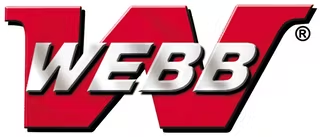Title Page
-
Location of work instruction:
-
Prepared by:
-
Date of the Report
-
Read work instructions
-
Mark items accordingly if they have been "Completed" or "Incomplete"
Check RP tank and change filter
-
Alarms, how to reset/fix the issue
-
Off loading line (Tagging skids correctly)
Washing Hubs
-
When to wash hubs
-
Location and different types of oil plugs (magnetic, non-magnetic)
Schedule
-
Computer use
-
Schedule has been prioritized and should be followed as written
Assembly Pick Sheet
-
Reading assembly pick sheet
-
Printing pallet labels
-
How to match components to pick sheet
-
Performing first piece inspection
Presses
-
Know about presses being linked
How to operate and set up stud press
-
Loading, hub orientation, verification of press completed, studs fully seated (using feeler gage) and undamaged
-
Verification of all ten studs
-
All ten studs same length
-
All loose studs picked up during change over and placed back in correct box. Look over, under, and behind tables and presses
-
Blow out and remove loose material in stud press dies
-
Look for broken or loose bolts in lower die (can cause scrap) in feed laser
-
Different types of studs (101160, 101162)
Shown what defects to look for at stud press
-
All studs same length
-
Correct studs for order
-
Visual damage to part
How to operate and set up cup press
-
Change dies, and blow out and remove loose material in cup press
-
Explain cup press verification sensors
-
Damaging bores during press operation
-
Cups fully seated (use filler gage)
-
Both cups present and pressed in
-
All loose cups picked up during change over and placed back in correct box (check over, under, and behind tables and presses)
-
Explain different types of cups
Shown what defects to look for at cup press
-
No cups/ cups not seated
-
Scratches in bores after pressing
-
Cups upside down
-
Visual damage to part
Shown how to inspect parts when doing service assemblies
-
Dotting the assembly with color specific marker
-
Check for cups seated/missing
-
Check studs are correct length and present
-
How to operate Cup checker
-
What do the red and green light mean
-
What you do if you get a red light
-
What is the C=0 chart
How to operate nutting station
-
Assembling hub and drum together
Shown what defects to be looking for at nutting station
-
Hub Cap holes drilled and tapped
-
Length of studs
-
Cups pressed in
-
Visual damage to part
Setting up TIR stand
-
Dotting the assembly with color specific marker
-
Labeling assembly
-
Checking TIR on hub and drum assembly
-
How to fill out paperwork
-
When to stack off and label loose hubs or drums
-
Do not use wet or damaged spacers
-
Scrap procedure
-
Use only Webb pallets and spacers (sort out all non Webb)
-
Broken or missing bottom runners on pallets, causes issues with strapper
-
Contact team leader if not reading
-
Ensure counter is equal to or greater than the number of assemblies checked per day
Shown what defects to be looking for at concentricity stand
-
Length of studs
-
Cups pressed in
-
Visual damage to part
End of shift clean up
-
Use of card board compactor
-
TPM
Signature
-
Supervisor should only sign after verifying trainee is capable of performing all tasks. All new employees must be signed off prior to 30 day review.
-
Trainee:
-
Supervisor / Team leader






